ASM Metals HandBook Vol. 8 - Mechanical Testing and Evaluation
Подождите немного. Документ загружается.

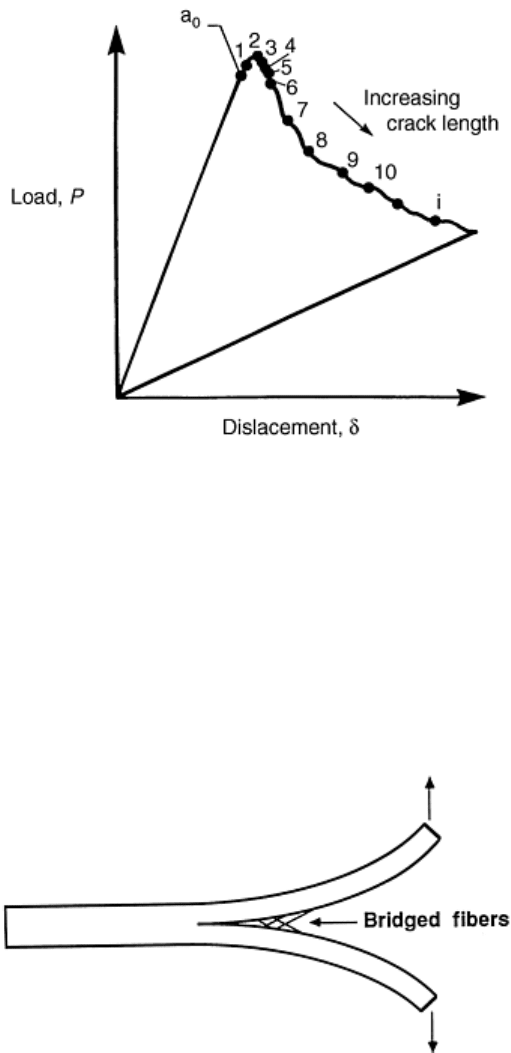
Fig. 37 Schematic load-displacement record during crack growth for a double cantilever beam test
DCB Data Reduction. As the delamination grows from the insert, a resistance curve may be constructed by
calculating and plotting the fracture toughness, G
Ic
, versus crack extension, Δa, or crack length, a. A common
occurrence in DCB testing is “fiber bridging,” which refers to debonded fibers bridging the fracture surfaces as
illustrated in Fig. 38. The fiber bridging increases the apparent fracture toughness as a result of the fiber
debonding process. This phenomenon may not occur at interfaces between dissimilar ply orientations in
laminates used in composite structures. Fiber bridging is thus considered as an artifact I, and the significance of
G
Ic
values incorporating contributions from fiber bridging is questionable. It has been suggested that the only
significant G
Ic
value is the initial value associated with crack extension from the film insert, because fiber
bridging occurs only after some crack extension (Ref 56).
Fig. 38 Fiber bridging in DCB testing of unidirectional laminates
Several data reduction methods for evaluating G
Ic
have been proposed (e.g., Ref 4, 8, 9, 53, 54) (see also
ASTM D 5528). The compliance calibration method based on the empirical compliance expression suggested
by Berry (Ref 57) has gained substantial acceptance. In this method the beam compliance, C = δ/P, is expressed
as:
C = a
n
/H
(Eq 29)
where a is the crack length and parameters n and H are determined experimentally. Compliance values, C
i
=
δ
i
/P
i
, corresponding to each crack length marked on the DCB specimen are evaluated from the data in Fig. 37.
A plot of log C versus log a is generated using all data points, and a least squares analysis is used to fit a
straight line to the data. The exponent n is obtained as magnitude of the slope of the straight line. Substitution
of Eq 29 into Eq 28 yields at fracture:
G
Ic
= nP
c
δ
c
/2wa
(Eq 30)
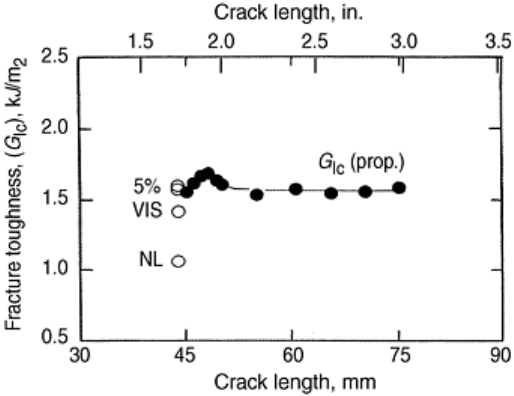
in which P
c
and δ
c
are the critical load and displacement associated with each crack length, a, and w is the
specimen width.
Three toughnesses corresponding to crack growth from the insert may be defined (Ref 56). G
Ic
(NL) refers to the
critical load and displacement associated with the deviation from linear response (Fig. 37). The second
definition of G
Ic
(visible) refers to the visual observance of crack growth measured with the traveling
microscope. The third definition of G
Ic
(5%) considers the load and displacement corresponding to a 5%
increase in compliance or where the load has reached its maximum value. G
Ic
(NL) is typically the most
conservative estimate of the fracture toughness. For subsequent crack growth, G
Ic
is calculated from the
recorded loads and crack lengths (Fig. 37) and Eq 30.
Figure 39 shows an example of a resistance curve R-curve for a graphite/polyetheretherketone composite. At
the first loading increment, the delamination grows from the tip of the thin film insert starter crack without any
influence from fiber bridging. The three fracture toughnesses, G
Ic
(NL), G
Ic
(visible) and G
Ic
(5%) are illustrated
in Fig. 39. As the crack grows, the crack surfaces become more and more separated and bridged fibers may
fracture or become pulled out from the matrix, which causes the apparent fracture toughness to increase. With
further crack extension, a steady-state toughness is usually reached, G
Ic
(prop.), corresponding to an equilibrium
number of bridged fibers per unit crack area.
Fig. 39 R-curve describing mode I interlaminar fracture resistance of graphite/PEEK with a 13 μm
insert. Source: Ref 56
Mode II Fracture
The end-notched flexure (ENF) beam specimen has emerged as a popular mode II test method since its
introduction to the composite community by Russell and Street in 1982 (Ref 58). The purpose of the test is to
determine the interlaminar fracture toughness, G
IIc
, of polymer matrix continuous fiber composites in the
forward shear mode (mode II) (see Fig. 34b). Pure shear loading of the crack tip is achieved by loading a
cracked three-point flexure specimen (Fig. 40) until the crack propagates. The test has been used primarily with
unidirectional laminates. The ENF specimen, like the DCB specimen, has been studied extensively by the
ASTM D-30 Committee but the unstable crack growth experienced has delayed ASTM standardization.
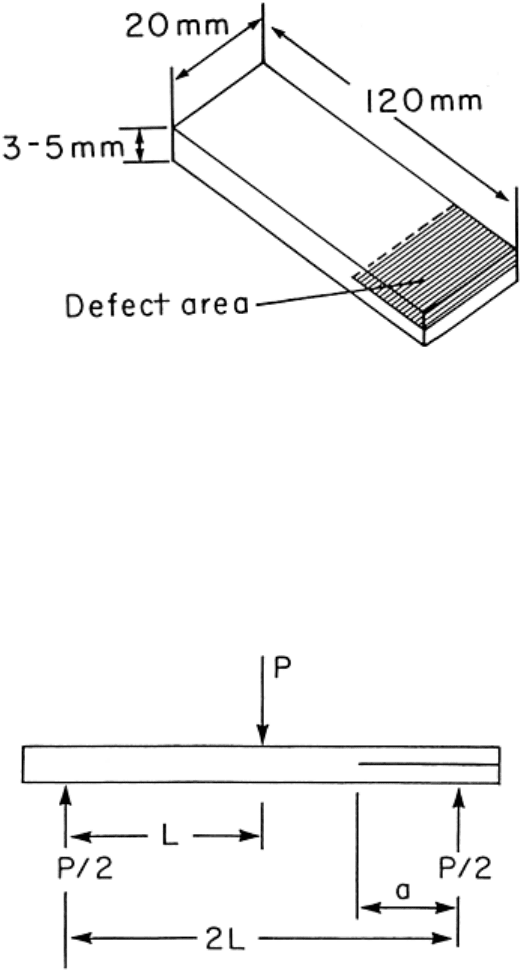
Fig. 40 End-notched flexure (ENF) specimen geometry and dimensions
ENF Specimen Preparation and Testing. The ENF specimen (Fig. 40) is typically 120 mm (4.7 in) long and 20
mm (0.8 in.) wide. Specimen thicknesses for unidirectional graphite and glass fiber composites are typically 3
and 5 mm (0.12 and 0.20 in.), respectively. The specimen is loaded in a three-point bend fixture (Fig. 41) with a
distance between the supports, 2L, of 100 mm (4 in.). The diameter of the loading and support pins should be
about 5 mm (0.2 in.). The ratio of crack length to half-span, a/L, should be 0.5 prior to propagation of the crack.
Panels should be manufactured with a nonadhesive Teflon or Kapton (i.e., DuPont de Nemours and Co.,
Wilmington, DE) film of thickness equal to or less than 13 μm placed at the midplane to define a starter crack.
As with the mode I test, the exact location of the precrack must be determined.
Fig. 41 End-notched flexure test configuration
After specimens have been cut from the panel, the width and thickness are measured at the center and 1 cm (0.4
in.) from each end. The thickness variations should not exceed 0.1 mm (0.004 in.). Prior to testing, the edges
should be painted white. There is presently no consensus on whether or not precracking away from the starter
film should be performed.
Precracking in mode I is likely to create fiber bridging and is not recommended (Ref 59). A shear precrack may
be achieved by using a long specimen (length > 150 mm, or 6 in.) with a long insert film (a > 50 mm, or 2 in.),
positioning the specimen so that a crack length of about 40 mm (1.6 in.) is achieved and loading the specimen
until a short, stable extension of the crack occurs. The shear crack front, however, is not visible on the fracture
surfaces of a broken-apart specimen, and accuracy of crack length measurement may suffer. Therefore,
propagation of the crack directly from the insert film is recommended.
ENF Testing. The ENF specimen should be placed in a standard three-point bend fixture, so that a crack length,
a, of 25 mm (1 in.) is achieved (see Fig. 41). Mark the support location on the specimen edge for subsequent
measurement of crack length. The center beam deflection (load point displacement), δ, should be measured
with a linear variable differential transformer (LVDT) or may be obtained from the crosshead displacement
corrected for the machine compliance. The specimen is loaded at a crosshead rate in the range of 0.5 to 1
mm/min (0.02 to 0.04 in./min), while the load-displacement response is monitored on a chart recorder. Both
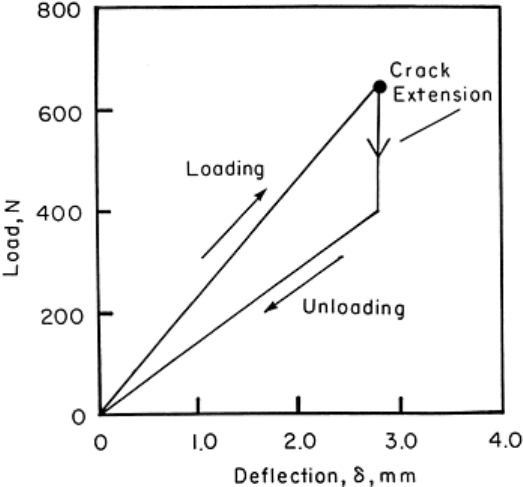
loading and unloading paths should be recorded. Observe the crack tip with the traveling microscope during
loading to detect any stable crack propagation prior to fast fracture. Slow crack propagation preceding fast
fracture is commonly observed in ductile matrix composites (Ref 60). If this occurs, mark this event on the load
deflection curve. Brittle-matrix composites tend to show linear response (see the load-deflection curve for a
brittle graphite/epoxy composite in Fig. 42). For such systems, fast fracture tends to occur without noticeable
stable crack extension.
Fig. 42 End-notched flexure test load-deflection curve for brittle graphite/epoxy (AS4/3501-6). L = 50.8
mm (2 in.), w = 25.4 mm (1 in.) and a = 27.9 mm (1.1 in.)
After testing, the initial crack length can be verified by cracking the failed specimen in two parts and measuring
the distance between the support pin (marked on the specimen edge) and the crack front defined by the insert
film. Commonly the outer support pin leaves an imprint on the specimen surface that can be used to further
verify the crack length measurements.
ENF Data Reduction. To evaluate the critical strain energy release rate (mode II fracture toughness), G
IIc
, the
load-displacement curve, shown in Fig. 43, is needed. Several toughness values may be determined, namely,
G
IIc
(NL), G
IIc
(visible) and G
IIc
(max) referring to the loads at onset of nonlinearity, visual stable crack extension,
and maximum load, respectively, as illustrated in Fig. 43. For calculation of G
IIc
the initial crack length is
required. For the specimen with no precrack, the initial crack length is measured directly from the tip of the
starter film as already described.
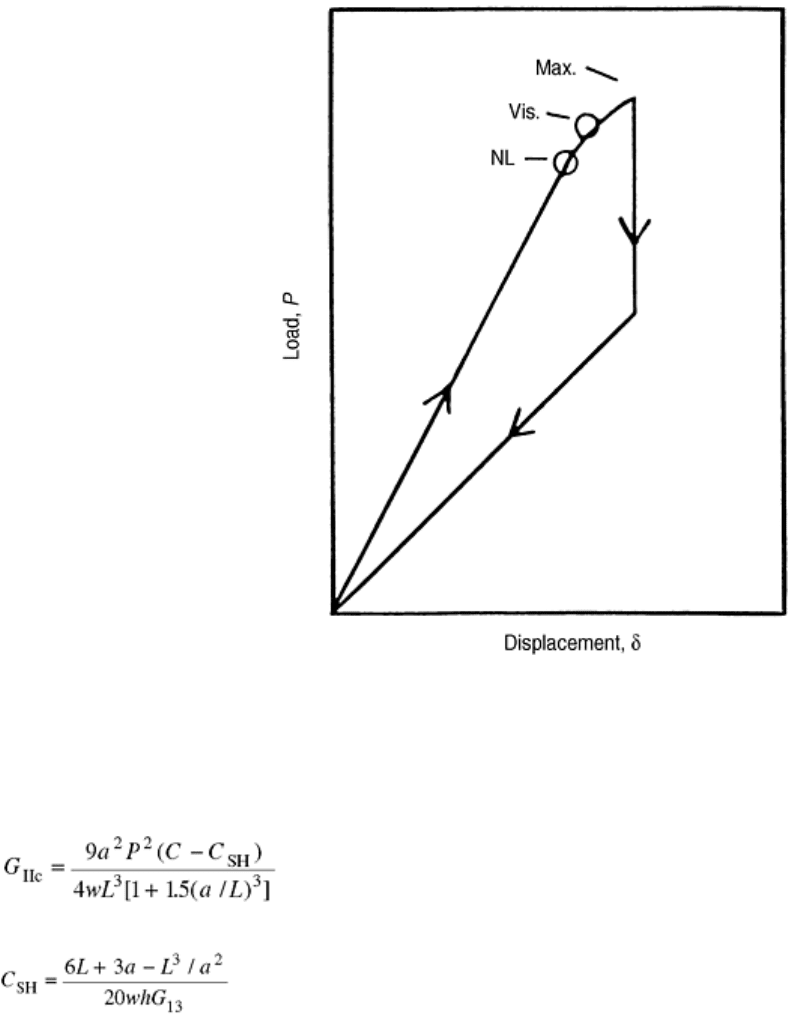
Fig. 43 Schematic load-displacement curve for the end-notched flexure fracture test. P(NL), P(visible)
and P(max) denote loads at onset of nonlinearity, onset of visible stable crack growth, and onset of fast
fracture, respectively.
The fracture toughness, G
IIc
, is calculated from the following expression:
(Eq 31)
where
(Eq 32)
The inplane shear modulus G
12
can be used as an approximation to the interlaminar shear modulus G
13
. To
calculate G
IIc
(NL), G
IIc
(visible), and G
IIc
(max), the loads P(NL), P(visible), and P(max), defined in Fig. 43 are
substituted along with the initial crack length in Eq 31.
Mixed Mode Fracture
In most practical situations, delaminations in composite materials tend to grow in mixed-mode stress fields, that
is, under combinations of tension and shear stresses ahead of the crack front. Experimental studies, (Ref 61,
62), have shown that the delamination toughness depends on the mode of loading. Consequently, delamination
characterization requires mixed mode fracture testing. Several mixed mode fracture specimens exist, but most
suffer from complicated test fixturing, a small range of mode mixities (G
II
/G
I
), and varying mode mixity as the
crack grows (Ref 63). The most promising mixed mode test specimen for delamination toughness testing is the
mixed mode bending (MMB) test (Fig. 44) proposed by Reeder and Crews (Ref 64, 65). The MMB test is
currently a candidate for becoming an ASTM standard because of simplicity of testing and the wide range of
mode mixities.
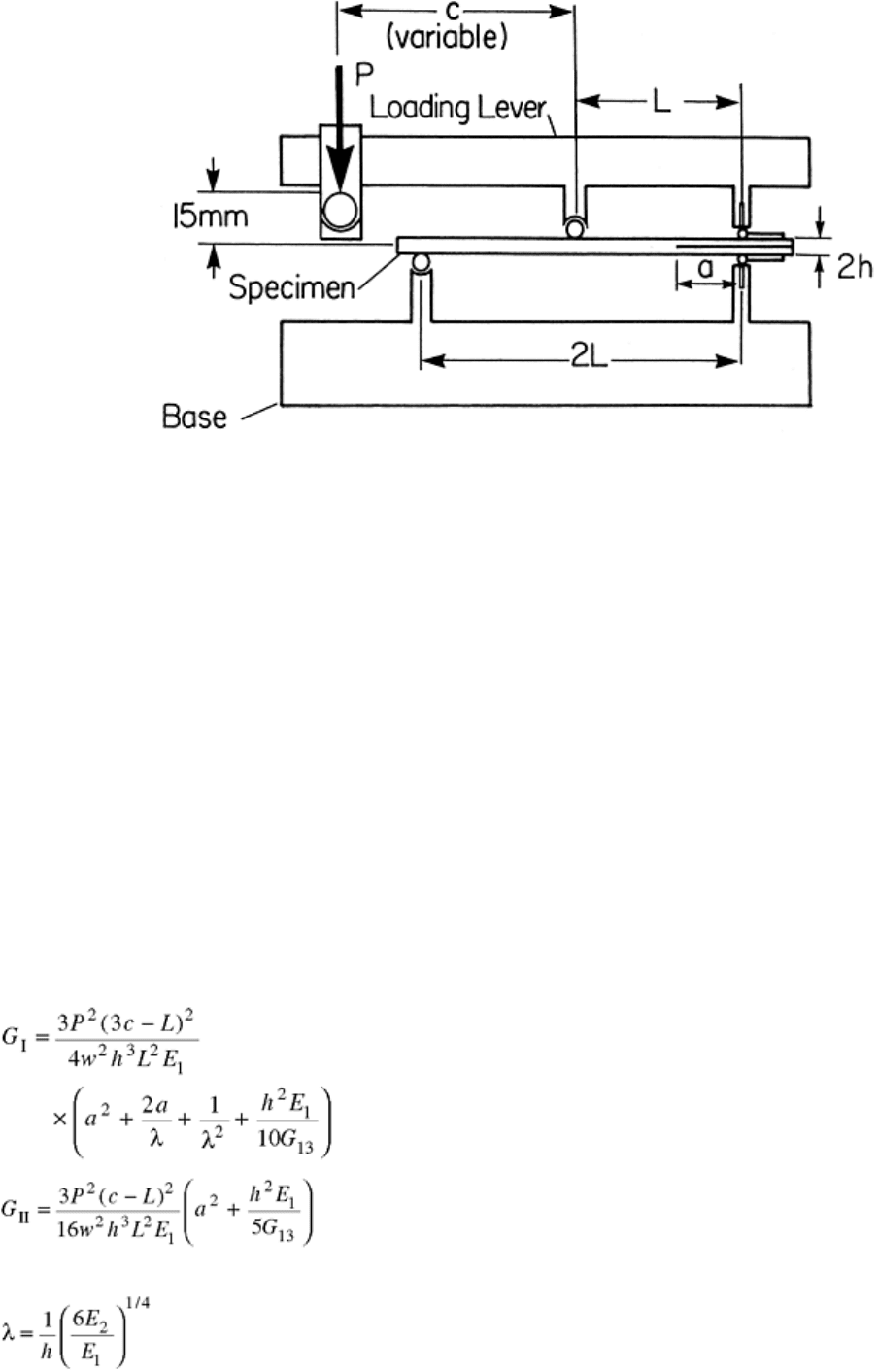
Fig. 44 Mixed mode bending (MMB) specimen and loading.
Figure 44 depicts the geometric parameters of the specimen. The MMB test is a superposition of the DCB and
ENF tests discussed previously. As shown in Fig. 44, the loading lever adds an opening load to the midspan-
loaded ENF specimen. The adjustable distance, c, between the point of load application and the midspan
determines the ratio of the downward force to upward force and, hence, the mode mix. Pure mode II
corresponds to c = 0 with the ratio G
II
/G
I
decreasing with increasing distance c.
MMB Testing. The MMB test employs a 150 mm (6 in.) long, hinged specimen prepared as the DCB specimen
discussed above (no precrack). The specimen width, w, and nominal thickness, 2h, considered by Reeder and
Crews (Ref 64, 65) were 25.4 and 3 mm (1.0 and 0.12 in.), respectively. The initial delamination length, a, was
25 mm (1 in.), and the half-span length, L, was 50 mm (2 in.) (Fig. 44). A set of desired mode mixes G
II
/G
I
=
0.25 (2 in.), 1, and 4 can be obtained by proper setting of the distance, c.
A crosshead rate in the range of 0.5 to 1 mm/min (0.02 to 0.04 in./min) should be used for consistency with the
DCB and ENF tests discussed above. A real time record of the load displacement response should be obtained
using an x-y recorder, and the crack tip should be monitored by a low magnification traveling microscope. The
occurrence of slow, stable crack growth should be marked on the load-displacement curve. The load-
displacement record is principally similar to that for the ENF specimen (Fig. 43) which allows G(NL),
G(visible), and G(max) to be evaluated.
MMB Data Reduction. Reeder and Crews (Ref 64, 65) derived the following expressions for the mode I and
mode II components of the energy release rate:
(Eq 33a)
(Eq 33b)
where
(Eq 34)
These expressions are quite accurate for the finite beam geometries employed in the MMB test. Study of Eq
33b reveals that the ratio G
II
/G
I
is only slightly dependent on crack length. An approximate equation for the
mode mixity is obtained from the asymptotic beam analysis presented in Ref 65:

(Eq 35)
For c < L/3, crack face contact may occur, which invalidates the analysis above. Equation (35) may be used for
initial (approximate) calculation of the mode mix, which ultimately should be calculated using Eq 33b.
The preceding sections of this article have presented a practical overview of the characterization methods used
to measure the fundamental mechanical properties of advanced composite materials. Methods for determining
basic engineering strength and elastic properties of lamina, structural properties of laminates, including open-
hole and damage tolerance performance, and the material fracture properties have been presented.
Understanding these static engineering properties and structural performance characteristics is crucial for
making material selection decisions and for preliminary design development. While necessary, these properties
are not the complete set of data required to design a structure. Design engineers must address numerous other
issues, such as environmental effects, fatigue behavior, creep, and behavior under extreme dynamic loading.
Two articles that follow provide valuable insights into how high strain rate and fatigue behavior of composites
are characterized.
Footnote
*
The section “Interlaminar Shear Properties of Fiber-
Reinforced Composites at High Strain Rates” was written
by John Harding and Stephen Hallett, Oxford University. The section “Fatigue Testing and Behavior of Fiber-
Reinforced Composites” was written by W. Steven Johnson and Ramesh Talreja, Georgia Institute of
Technology.
References cited in this section
4. J.M. Whitney, I.M. Daniel, and R.B. Pipes, Experimental Mechanics of Fiber Reinforced Composite
Materials, revised ed., Society for Experimental Mechanics; Prentice-Hall, Englewood Cliffs, 1984
8. L.A. Carlsson and R.B. Pipes, Experimental Characterization of Advanced Composite Materials, 2nd
ed., Technomic, Lancaster, 1987
9. D.W. Wilson and L.A. Carlsson, Mechanical Characterization of Composite Materials, Physical
Methods of Chemistry, 2nd. ed., Vol VII, B.W. Rossiter and R.B. Baetzold, Ed., John Wiley & Sons,
1991, p 139
50. H.L. Ewalds and R.J.H. Wanhill, Fracture Mechanics, Edward Arnold, London, 1989
51. S.-M. Lee, An Edge Crack Torsion Method for Mode III Delamination Fracture Testing, J. Compos.
Technol. Res., Vol 15, 1993, p 193
52. P. Davies, B.R.K. Blackman, and A.S. Brunner, “Standard Test Methods for Delamination Resistance of
Composite Materials: Current Status, Appl. Compos. Mater., Vol 5, 1998, p 345
53. J.W. Gillespie, Jr. and L.A. Carlsson, Interlaminar Fracture of Laminated Composite Materials,
Delaware Composites Design Encyclopedia, Vol 6, Technomic, Lancaster, 1990, p 113
54. Z. Suo, Delamination Specimens for Orthotropic Materials, J. Appl. Mech., Vol 57, 1990, p 627
55. W.B. Bascom, R.J. Bitner, R.J. Moulton, and A.R. Siebert, The Interlaminar Fracture of Organic-Matrix
Woven Reinforced Composites, Composites, Vol 11, 1980, p 9
56. T.K. O'Brien and R.H. Martin, Results of ASTM Round Robin Testing for Mode I Interlaminar Fracture
Toughness of Composite Materials, J. Compos. Technol. Res., Vol 15, 1993, p 327

57. J.P. Berry, Determination of Fracture Energies by the Cleavage Technique, J. Appl. Phys., Vol 34, 1963,
p 62
58. A.J. Russell and K.N. Street, Factors Affecting the Interlaminar Fracture Energy of Graphite/Epoxy
Laminates, Progress in Science and Engineering of Composites, T. Hayashi, K. Kawata, and S.
Omekawa, Ed., ICCM-IV, American Society for Metals, 1982, p 279
59. T.K. O'Brien, G.B. Murri, and S.A. Salpekar, “Interlaminar Shear Fracture Toughness and Fatigue
Thresholds for Composite Materials,” ASTM STP 1012, 1989, p 222
60. L.A. Carlsson, J.W. Gillespie, Jr., and B.R. Trethewey, Mode II Interlaminar Fracture of
Graphite/Epoxy and Graphite/PEEK,” J. Reinf. Plast. Compos., Vol 5, 1986, p 170
61. W.S. Johnson and P.D. Mangalgiri, Influence of the Resin on Interlaminar Mixed Mode Fracture,
ASTM STP 937, 1987, p 295
62. S. Hashemi, A.J. Kinloch, and J.G. Williams, The Effects of Geometry, Rate and Temperature on the
Mode I, Mode II, and Mixed Mode I/II Interlaminar Fracture of Carbon-Fiber/Poly (ether-ether ketone)
Composites, J. Compos. Mater., Vol 24, 1990, p 918
63. L.A. Carlsson, Fracture of Fiber Composites, Structure and Properties of Composites, T-W. Chow, Ed.,
VCH, Weinheim, 1993, p 533
64. J.R. Reeder and J.H Crews, Jr., “A Mixed Mode Bending Method for Delamination Testing,” AIAAJ,
Vol 28, 1990, p 1270
65. J.R. Reeder and J.H. Crews, Jr., Redesign of the Mixed Mode Bending Delamination Test to Reduce
Nonlinear Effects, J. Compos. Technol. Res., Vol 14, 1992, p 12
Mechanical Testing of Fiber-Reinforced Composites
Dale Wilson, The Johns Hopkins University, Leif A. Carlsson, Florida Atlantic University
Interlaminar Shear Properties of Fiber-Reinforced Composites at
High Strain Rates
John Harding and Stephen Hallet, Oxford University
Delamination damage in composite materials frequently occurs as a result of transverse impact loading. A
significant parameter in determining the ability of the composite to resist delamination is its interlaminar shear
strength. It is important, therefore, to be able to measure the interlaminar shear strength under impact. However,
even at quasi-static rates of loading, the design of a specimen in which interlaminar failure occurs under pure
shear is a significant problem. Under impact loading there is an added constraint in that quasi-static equilibrium
must be achieved within the specimen well before it fails if the results are to be capable of meaningful
interpretation.
Footnote

*
The section “Interlaminar Shear Properties of Fiber-
Reinforced Composites at High Strain Rates” was written
by John Harding and Stephen Hallett, Oxford University. The section “Fatigue Testing and Behavior of Fiber-
Reinforced Composites” was written by W. Steven Johnson and Ramesh Talreja, Georgia Insti
tute of
Technology.
Mechanical Testing of Fiber-Reinforced Composites
Dale Wilson, The Johns Hopkins University, Leif A. Carlsson, Florida Atlantic University
Types of Interlaminar Shear Test
In practice, the split Hopkinson pressure bar (SHPB) technique, as described in the Section “High Strain Rate
Testing” in this Volume, is probably the best established for producing reliable data at impact rates of strain.
Several different types of interlaminar shear specimen have been developed for use with this technique (Ref 66,
67) but all have some limitations. Although very inconvenient to manufacture, thin-walled tubular specimens
cut with the axis perpendicular to the interlaminar plane and tested in the torsional SHPB would seem to offer a
good chance of success, and excellent results have been obtained this way for a plain-weave glass fiber
reinforced plastic (GFRP) (Ref 68). However, the continuous variation of shear direction in relation to the
directions of reinforcement leads to problems in specimens with a cross-ply lay-up (Ref 69), problems that are
likely to be equally if not more severe with unidirectionally reinforced specimens. This difficulty is overcome
by the use of a double-lap design of specimen tested in the tensile SHPB (Ref 70). In these tests, however, the
shear stress on the interlaminar failure planes shows some considerable variation, and significant normal
stresses are present at the ends of the failure plane. More recently an improved single-lap design of shear
specimen has been developed for testing in a modified-compression SHPB. This was first used by Bouette et al.
(Ref 71) to determine shear modulus at high rates of strain and later by Bouette et al. (Ref 72) and by Dong and
Harding (Ref 73) to determine interlaminar shear strength. This type of specimen has the advantage that the
shear stress on the central interlaminar plane is close to uniform and the normal (peeling) stress is very mall.
More recently, the most commonly used design of single-lap specimen has been the subject of a detailed
analysis by Hallett et al. (Ref 74) who have shown that with a cross-ply lay-up, failure may not initiate on the
central plane but in a region of stress concentration adjacent to the central interlaminar plane. Nevertheless this
remains the best documented and probably the most versatile technique for composites of different lay-ups and
so will be the one presented in more detail here.
Footnote
*
The section “Interlaminar Shear Properties of Fiber-
Reinforced Composites at High Strain Rates” was written
by John Harding and Stephen Hallett, Oxford University. The section “Fatigue Testing and Behavior of Fiber-
Reinforced Composites” was written by W. Steven Johnson and Ramesh Talreja, Georgia Institute
of
Technology.
References cited in this section
66. S.M. Werner and C.K.H. Dharan, The Dynamic Response of Graphite Fiber/Epoxy Laminate at High
Shear Strain Rate, J. Compos., Mater., Vol 20, 1986, p. 365–374
67. C.Y. Chiem and Z.G. Liu, Modelling of Dynamic Behavior of Composite Materials, Proc. IMPACT 87,
Impact Loading and Dynamic Behavior of Materials, C.Y. Chiem, H.-D. Kunze, and L.W. Meyer, Ed.,
DGM Informationsgesellschaft mbH, Oberursel, 1988, Vol 2, p 579–586

68. H. Leber and J.M. Lifshitz Interlaminar Shear Behavior of Plain-Weave GRP at Static and High Rates
of Strain, Compos. Sci. Technol., Vol 56,1996, p 391–405
69. T. Parry and J. Harding, The failure of Glass-Reinforced Composites under Dynamic Torsional
Loading, Colloque Int. Du CNRS No. 319, Plastic Behaviour of Anisotropic Solids, J.P. Boehler, Ed.,
(CNRS, Paris, 1988) p 271–288
70. J. Harding and Y.L. Li, Determination of Interlaminar Shear Strength for Glass/Epoxy and
Carbon/Epoxy Laminates at Impact Rates of Strain, Compos. Sci. Technol., Vol 45, 1992, p 161–171
71. B. Bouette, C. Cazeneuve, and C. Oytana, Shear in Carbon/Epoxy Laminates at Various Strain Rates,
Proc. ECCM-4, Developments in the Science and Technology of Composite Materials, J. Fuller et al.,
Ed., (Elsevier Applied Science, London and New York) 1990, p 937–942
72. B. Bouette, C. Cazeneuve, and C. Oytana, Effect of Strain Rate on Interlaminar Shear Properties of
Carbon/Epoxy Composites, Compos. Sci. Technol., Vol 45, 1992, p 313–321
73. L.M. Dong and J. Harding, A Single-Lap Shear Specimen for Determining the Effect of Strain Rate on
the Interlaminar Shear Strength of Carbon-Fiber Reinforced Laminates, Composites, Vol 25, 1994, p
129–138
74. S.R. Hallett, C. Ruiz, and J. Harding, The Effect of Strain Rate on the Interlaminar Shear Strength of a
Carbon/Epoxy Cross-Ply Laminate: Comparison between Experiment and Numerical Prediction,
Compos. Sci. Technol., Vol 59, 1999, p 749–758
Mechanical Testing of Fiber-Reinforced Composites
Dale Wilson, The Johns Hopkins University, Leif A. Carlsson, Florida Atlantic University
Split-Hopkinson Pressure Bar Test
Specimen Design. The optimum design of a single-lap specimen and the Hopkinson-bar arrangement in which
it is tested are shown in Fig. 45. This design has been used successfully in tests on unidirectional carbon fiber
reinforced plastic (CFRP) (Ref 73) but, because of difficulties in fixing the specimen to the loading bars, it
could not be used when testing unidirectional carbon/polyetheretherketone (PEEK). A modified design of
specimen was therefore developed with a slightly different fixing to the loading bars (see Fig. 46). This has
been used successfully in tests on both unidirectional and cross-ply carbon/epoxy and carbon/PEEK specimens
and on woven reinforced carbon/epoxy and glass/epoxy specimens (Ref 75). Since very similar results were
obtained in tests on carbon/epoxy specimens using the optimum and the modified geometries (Ref 73), the
modified geometry is now most commonly used. The specimen is intended to fail on the central interlaminar
plane where the shear stress is highest and most uniform and the normal stresses are lowest. In practice, the
position of the failure plane will be constrained by the lay-up of the composite. For example, in a cross-ply
specimen (see Fig. 46), the positions of the interfaces between the 0 and 90° layers with respect to the
centerline between the notches will determine the failure plane.
